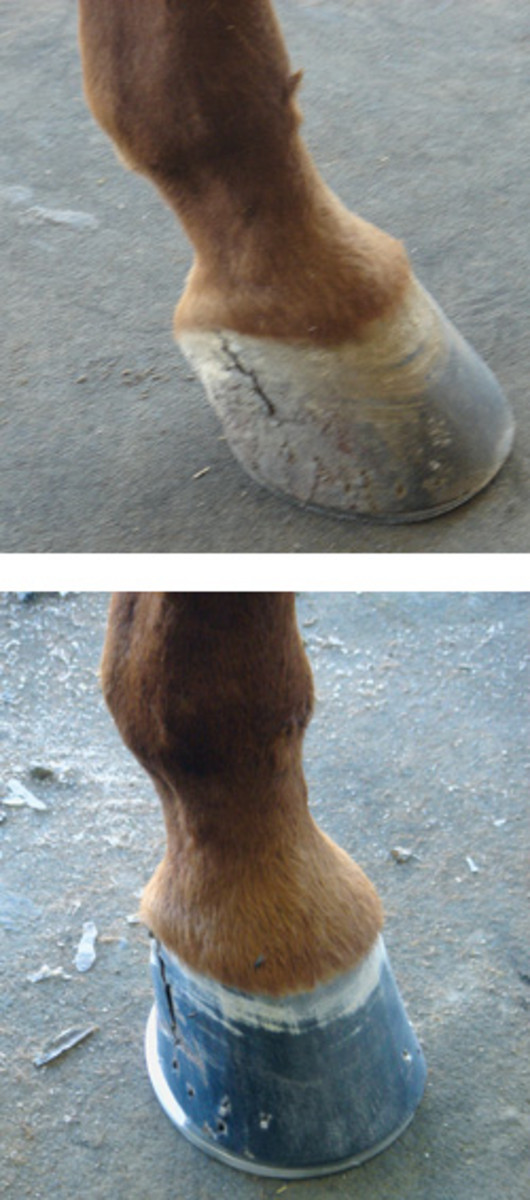
Quarter cracks are a common problem with horses simply because of the makeup of a horse’s foot. A great deal of weight and torque forces impact the relatively small area of the hoof capsule of a horse. Some horses, due to their conformation and gait dynamics, break down the anatomy of the hoof capsule, resulting in a quarter crack.
The hoof wall grows from the hairline (coronary band) vertically downward to the ground. The hoof wall is made up of tubules that grow in parallel lines, so when this structure fails, the result is a vertical line we call a quarter crack. Lameness is the result of the nerve-rich sensitive lamina between the hoof wall and coffin bone being irritated or traumatized. Dealing with this problem is, in my opinion, an art based on science. One has to identify what specific problems contribute to overloading the hoof wall in this area and be resourceful enough to correct them.
Historically, there are many ways to attempt to “fix” a quarter crack. Various ways of patching the crack have been devised. Things like suturing the crack together with surgical wire, metal plates with screws or acrylics have been used to treat the problem. It seems to me that whatever of these methods one may use, the most important part of the treatment is balancing the foot so you avoid the stress overload that causes the crack in the first place. Correcting the abnormal forces the individual horse suffers from in the way the foot lands, the weight distribution and the breakover process may be all that is needed to correct the problem.
Some horses suffer from weak hoof walls and can be helped long term with dietary supplements. However, the hoof wall grows from the hairline and takes six months to a year to reach the ground, so supplements have a long lag phase to impact the entire wall. Horses in environments where their feet get wet and then dry out constantly, such as irrigated pastures, suffer from the leaching of moisture and natural oils that make them susceptible to hoof cracks. Hoof dressing can help prevent this process from causing problems.
Author’s Note: The work on this specific case was done by Dr. Ian Campbell, an associate of Dr. Van Snow in Santa Ynez, Calif. Dr. Campbell is a unique combination of an expert farrier who is also a veterinarian.











